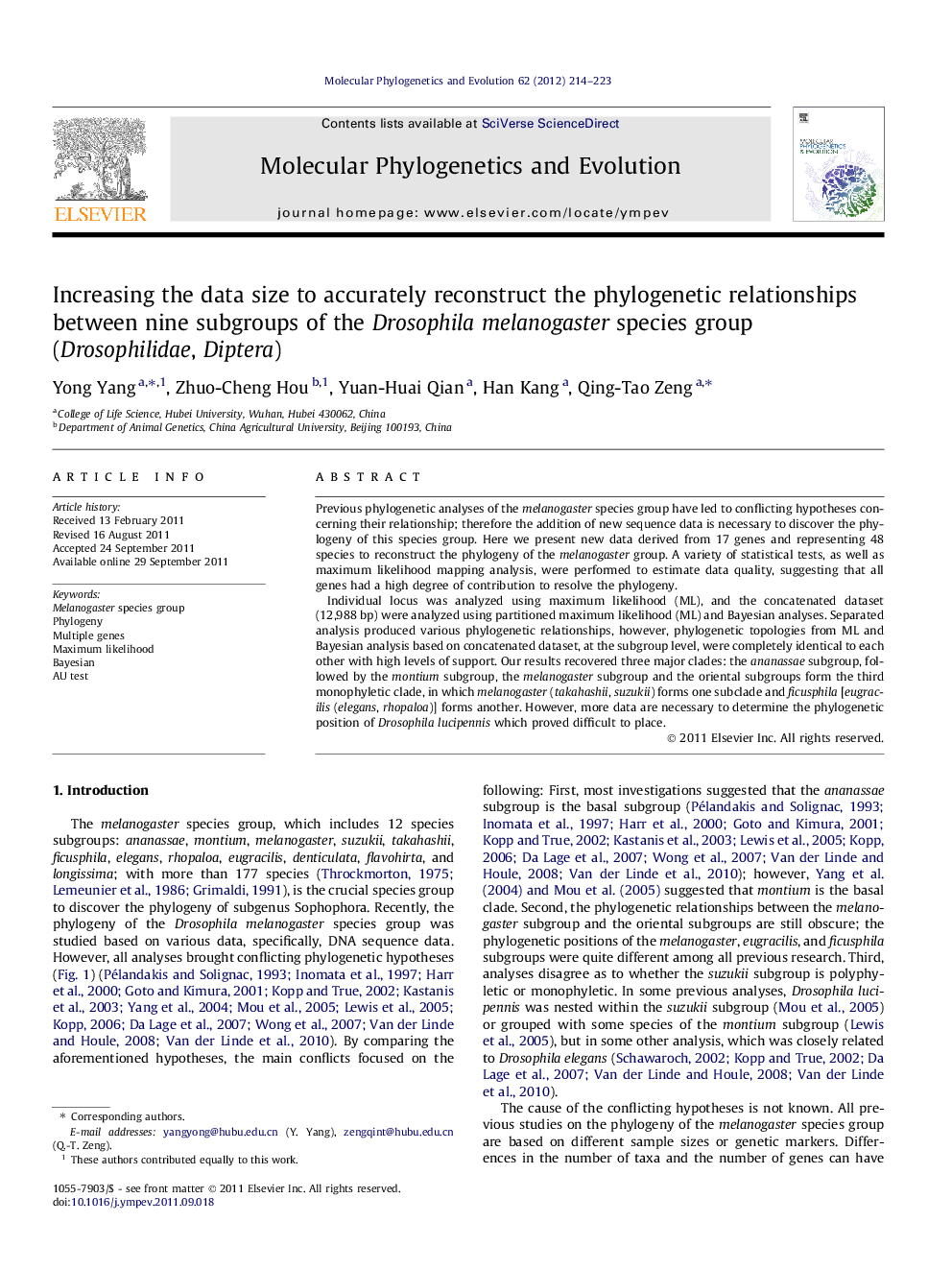| Article ID | Journal | Published Year | Pages | File Type |
|---|---|---|---|---|
| 5920353 | Molecular Phylogenetics and Evolution | 2012 | 10 Pages |
Previous phylogenetic analyses of the melanogaster species group have led to conflicting hypotheses concerning their relationship; therefore the addition of new sequence data is necessary to discover the phylogeny of this species group. Here we present new data derived from 17 genes and representing 48 species to reconstruct the phylogeny of the melanogaster group. A variety of statistical tests, as well as maximum likelihood mapping analysis, were performed to estimate data quality, suggesting that all genes had a high degree of contribution to resolve the phylogeny.Individual locus was analyzed using maximum likelihood (ML), and the concatenated dataset (12,988Â bp) were analyzed using partitioned maximum likelihood (ML) and Bayesian analyses. Separated analysis produced various phylogenetic relationships, however, phylogenetic topologies from ML and Bayesian analysis based on concatenated dataset, at the subgroup level, were completely identical to each other with high levels of support. Our results recovered three major clades: the ananassae subgroup, followed by the montium subgroup, the melanogaster subgroup and the oriental subgroups form the third monophyletic clade, in which melanogaster (takahashii, suzukii) forms one subclade and ficusphila [eugracilis (elegans, rhopaloa)] forms another. However, more data are necessary to determine the phylogenetic position of Drosophila lucipennis which proved difficult to place.
Graphical abstractDownload full-size imageHighlights⺠Seventeen genes and 48 species were use to analyze the phylogeny of melanogaster group. ⺠Ananassae was the basal subgroup followed by montium. ⺠Phylogeny of the melanogaster and oriental subgroups were well reconstructed. ⺠Phylogenetic position of Drosophila lucipennis was not resolved.
